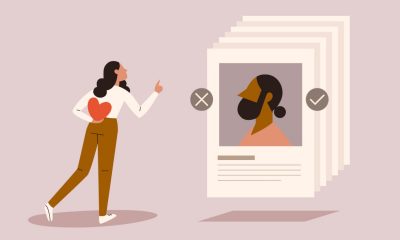Technology
Tech workers in San Francisco want electric scooters to return


Plenty
of people in San Francisco miss the electric scooters that once
blanketed streets and sidewalks.
Benoit Tessier/Reuters
-
The electric scooter armageddon in San Francisco was
over almost as quickly as it began. -
When the scooters arrived seemingly overnight in San
Francisco, tech workers took to social media to express their
outrage. That’s no longer the case. -
After the city passed a temporary ban on scooters, tech
workers in San Francisco have been on Twitter declaring how
much they miss scooters.
After taking to social media to gripe about the avalanche of
electric scooters, tech workers in San Francisco are now begging
the city to allow their return.
“Seriously though, when are we getting these scooters back in
SF?” Parsa
Saljoughian, an investor at venture firm IVP, which recently
backed Lime, posted on Twitter.
Sarah
Guo, a general partner at Greylock, said in a tweet, “Come
back to SF, scooters.”
“Yes please!” said Dennis
Yang, founder of bot analytics company Dashbot.io, in a
response to Guo’s tweet. “So many short trips here in SF that
they are perfect for.”
Yang added that he has 70 credits left for Lime scooters, some of
which expire in 13 days. But the chances he will be able to use
them in San Francisco in time are slim.
After scooters hit the streets of San Francisco in March, many
residents —
including some tech workers — raged against the electric
vehicles for routinely blocking sidewalks and building entrances,
causing people to trip, and making sidewalks less accessible for
people with mobility issues. The city attorney’s office heard
their complaints, and it eventually slapped three, high-profile
scooter startups with cease and desist orders.
A dozen companies, including Lime, Bird, Uber (via its
acquisition of bike-sharing startup Jump), and Lyft, are now
vying for a limited number of permits. The city said in a blog
post last week that
scooters probably won’t return to San Francisco until August.
While some tech workers cheered the demise of scooters, others
are pining for their return in San Francisco. We’ve noticed
entrepreneurs
and venture
capitalists
sharing how much they miss scooters on Twitter in recent weeks.
Dear SF,
I miss the scooters.
Dear tech twitter,
I’m sorry.
Sincerely,
Mike sitting in traffic to travel 1.5 miles.
— Michael Dempsey (@mhdempsey) July 19, 2018
I have to say I miss the scooters ? in San Francisco. It improves mobility so much
— Philipp Berner (@philippberner) June 14, 2018
On Monday, Lime — the scooter startup backed by Andreessen
Horowitz — released a
report looking back at its first year. More than six million
rides have been taken on the company’s vehicles, which include
pedal bikes, electric bikes, and electric scooters.
The report showed that San Franciscans cannot get enough of the
company’s scooters. In a survey sent to over 7,000 users living
in the area, 93% of riders said they thought the city needed more
scooters to satisfy demand. Lime booked about 300,000 rides on
its electric scooters in San Francisco before the city
temporarily banned all scooters.

Arthur-Louis
Jacquier, general general of Lime France, (right) rides a scooter
after the California-based company launched a fleet of scooters
in Paris, France, earlier this year.
Michel Euler/AP
In June, Lime told Business Insider
it’s already working on a solution for the complaint that
largely led to the scooter crackdown in the first place: The fact
that because there’s no dedicated scooter parking, they tend to
get dumped anywhere and everywhere.
The company is in talks with SpotHero, an
app that lets drivers find, reserve, and pay for parking
spots on their phones, to dock some scooters in parking
garages. The idea is that dedicated parking will help riders find
scooters more easily, and it gives scooters a home inside of
SpotHero’s garages and lots so they take up less space on streets
and sidewalks.
According to SpotHero, it’s in conversation with several scooter
companies. SpotHero CEO and cofounder Mark Lawrence said the
talks are still early, but he’s optimistic that his startup will
partner with others to improve the scooter situation for
everybody.
“The way we do it isn’t so much important as the why, which is,
so we can make mobility better, so we can reduce congestion, so
we can get people to move in and out of cities,” Lawrence told
Business Insider.
See also:
-

 Business6 days ago
Business6 days agoLangdock raises $3M with General Catalyst to help businesses avoid vendor lock-in with LLMs
-

 Entertainment5 days ago
Entertainment5 days agoWhat Robert Durst did: Everything to know ahead of ‘The Jinx: Part 2’
-

 Entertainment5 days ago
Entertainment5 days agoThis nova is on the verge of exploding. You could see it any day now.
-

 Business5 days ago
Business5 days agoIndia’s election overshadowed by the rise of online misinformation
-

 Business5 days ago
Business5 days agoThis camera trades pictures for AI poetry
-

 Business5 days ago
Business5 days agoCesiumAstro claims former exec spilled trade secrets to upstart competitor AnySignal
-

 Entertainment7 days ago
Entertainment7 days agoDating culture has become selfish. How do we fix it?
-

 Business7 days ago
Business7 days agoScreen Skinz raises $1.5 million seed to create custom screen protectors






















